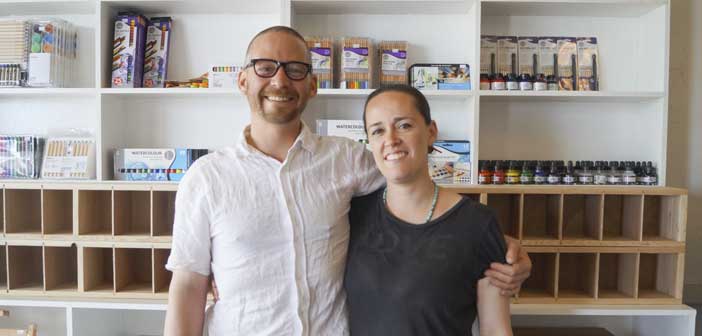M’CHIGEENG—Island students from Grade 6 and up were invited to attend a group discussion at Manitoulin Secondary School (MSS) on May 22 as part of Sexual Abuse/Assault Prevention Month. As Marnie Brown, outreach worker with Manitoulin Family Resources (MFR) and co-chairperson of M’Nidoo Minissing Coalition Against Violence explained to those in attendance, there were people attending representing justice, health and child welfare as well as others who are working to address violence against women. Ms. Brown explained that there is a disturbing trend in the ongoing objectification of women.
Ms. Brown introduced Julie Lalonde, the guest speaker. Ms. Lalonde is a social justice activist who lives in Ottawa but once lived on Manitoulin and attended MSS for her Grade 9 year. She has worked for the last three years as a project manager with the Draw the Line program, which is an anti-sexual violence provincial campaign that singles out bystanders. The program was initiated by the Ontario Coalition of Rape Crisis Centres (OCRCC) and seeks to start discussion and dispute accepted myths and stereotypes about sexual violence. Ms. Lalonde defines sexual violence as a term used to describe what happens to a person as opposed to what the law says. This would include fondling, stalking, groping and other actions as well as sexual violence that can happen on the street or online. “One in three Canadian women will experience sexual violence,” Ms. Lalonde said, “and the threat of sexual assault lives with women all their lives.” Less than 10 percent of the actions are reported to police, 80 to 90 percent of the assaults are by someone the person knows and the highest rates of sexual violence happen to females under the age of 25, Ms. Lalonde explained. “People assume that sexual assault occurs by someone unknown in a dark alley somewhere,” she said, “but usually the person knows the person assaulting them.” It is also important, as Ms. Lalonde pointed out, to know how a community will respond as women will go to those members before to the police. Her goal is to start a conversation and, in doing so, she asks questions about what one would do in certain situations.
“People and the media will say to me,” Ms. Lalonde told her audience, “they shouldn’t be walking alone, they shouldn’t go out at night. So what? I need a chaperone? I have to have someone walk with me at 5:05 pm as I leave work? So where is the responsibility on him? Very, very small percentages of men—five percent—do these assaults and they do it over and over again because they are not held accountable.”
Ms. Lalonde went on to talk about the bystander effect, which means a person who sits by and watches—a person sees something, but does not act on it. The term, she explained, comes out of the medical field as no one reacts when someone is having a heart attack in a crowded room, thinking someone else will do something. Bystanders will say, “I didn’t think it was wrong” or “I didn’t want it to come back on me” or “she shouldn’t have drank or dressed like that or gone to the party.”
The first question Ms. Lalonde asked about sexual violence to the group was, “Your favourite singer has assaulted his girlfriend. Do you download his latest single?” After listening to answers from participants, Ms. Lalonde explained that, “You can’t say ‘I am against violence against women, I stand up for women’s rights,’ but yet you download Chris Brown’s music. Then you cannot say you are for women’s rights.”
Ms. Lalonde then talked about alcohol-facilitated sexual assault, telling the audience that you cannot agree to sexual activities if you are under the influence of alcohol. “We need to have a conversation about this,” she said, as she went on to talk about drinking in bars and explained that alcohol, not drugs, are the number one problem and that University of Toronto research shows that men would go to bars and purposely look for women who were “hammered” and take them home. “Half of sexual assaults in Canada are alcohol induced,” Ms. Lalonde disclosed.
Another problem Ms. Lalonde discussed was sexting. She explained that she has crisscrossed the province for a few years now and every single school, high school, French, English, Catholic or not, has had to deal with a sexting dilemma, which has led to suicide in some cases. “Forty percent of teen girls,” Ms. Lalonde said, “reported that pressure from guys was the primary reason for sending the photo. It is against the law to forward pictures of nude girls to others.”
Ms. Lalonde concluded her talk by outlining the three steps of bystander intervention which are, call out the behaviour, support the person who has been targeted and speak out. “Bullies,” she said, “are supported in their behaviour by our silence, our apathy.”
For more information, go to Draw-the-Line.ca.




